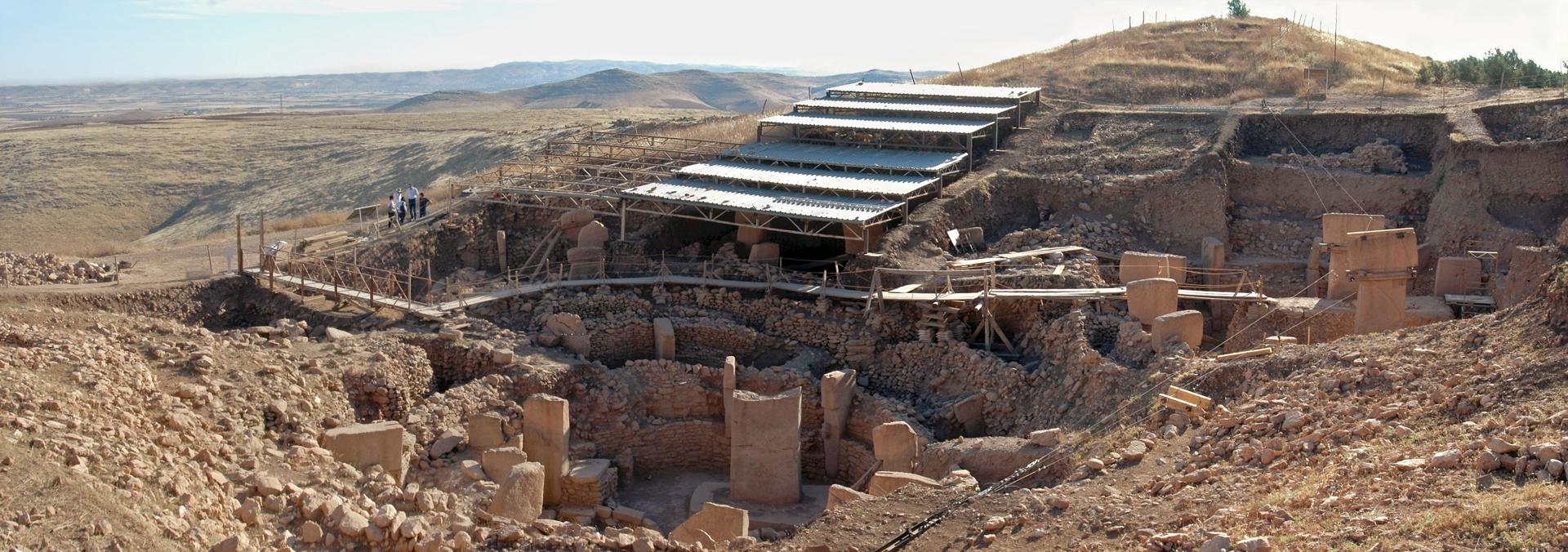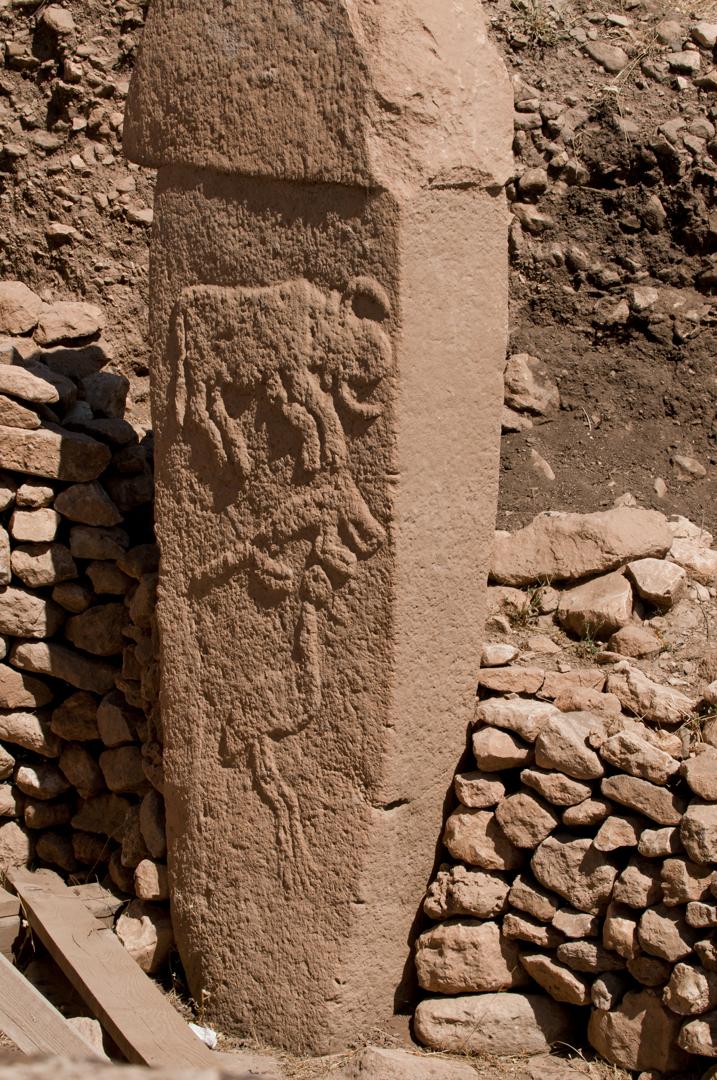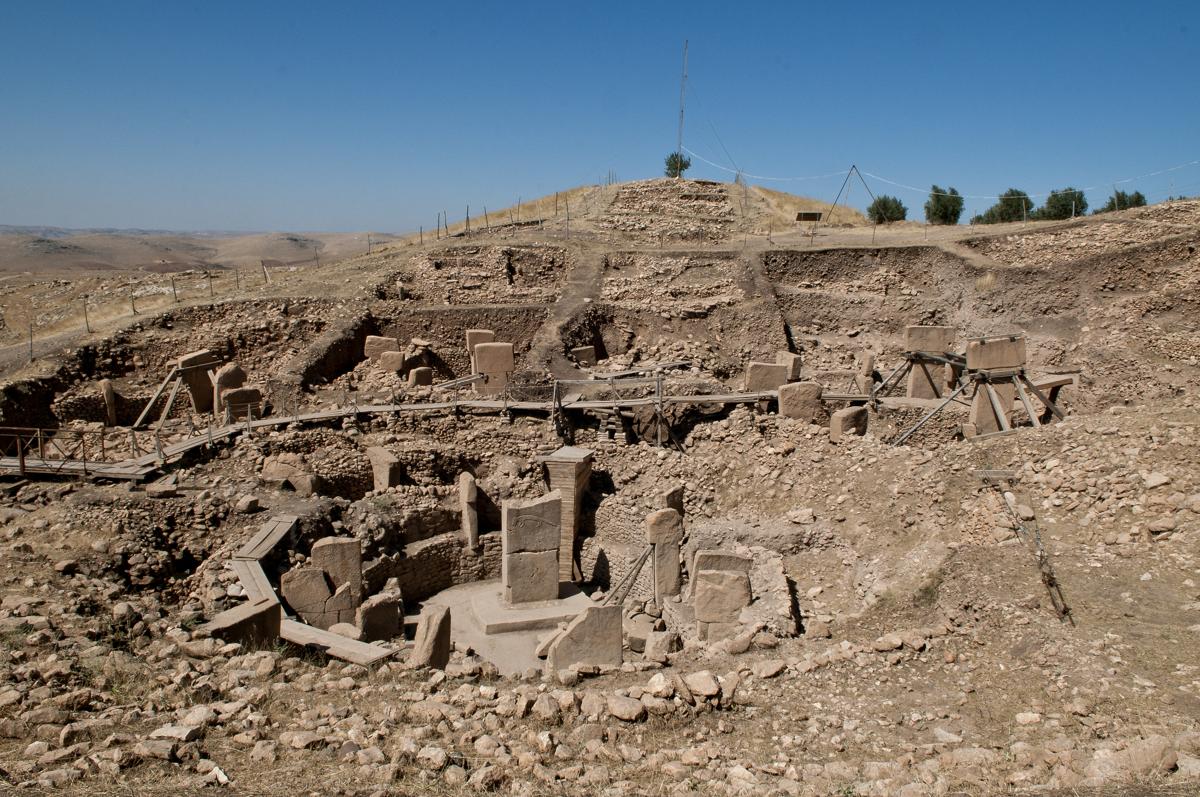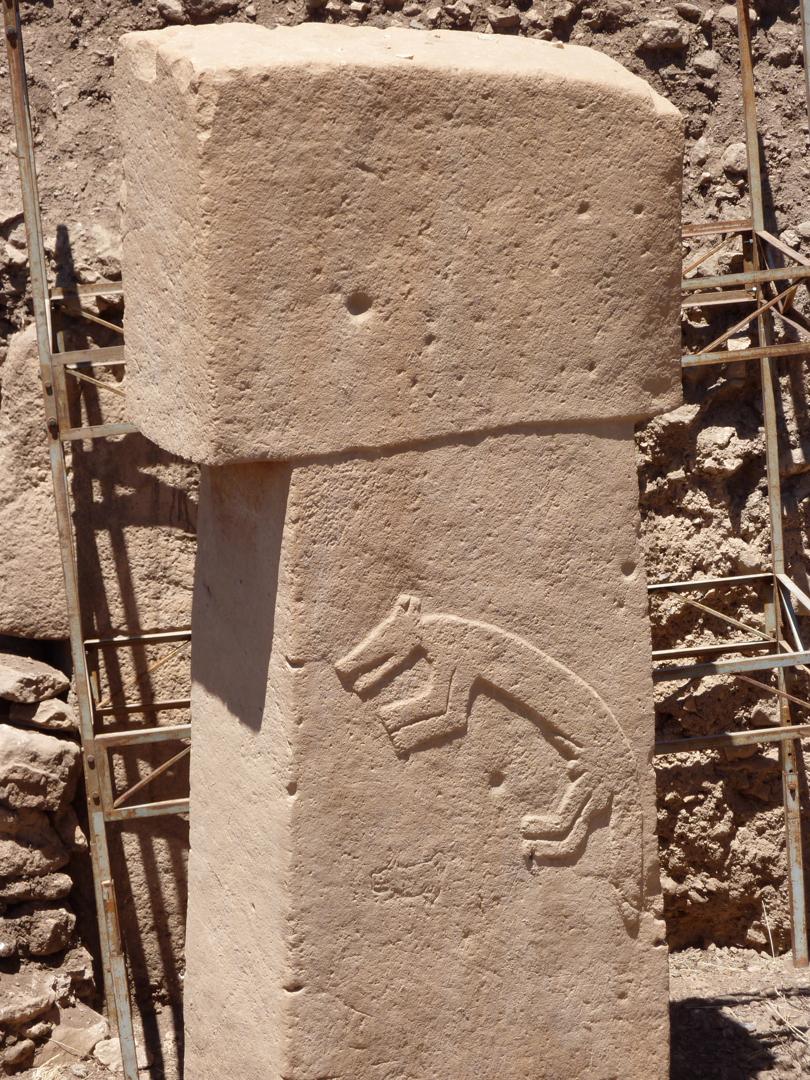|
Although Göbekli Tepe was discovered back in the 1960’s its significance was not recognized until 1990’s. There is no doubt that this is one of the most mysterious archaeological sites in the world which confuses archaeologists since then. It is located in Southeastern Anatolia, Turkey, 12 miles from Urfa (known as Edessa in ancient times). The first assumption was that it was just a Medieval graveyard without any potential for research. However, everything changed when German archaeologist Klaus Schmidt rediscovered it in 1994. After excavation started, radiocarbon analysis of finds has proved that the site is older than 10,000 BC, several thousand years older than Sumerian civilization and the Stonehenge. The city consists of a large number of flat megalithic stones, arranged in a circles and the most of the stones have “T” shape. The stones are carved with images of birds, insects, animals, and stylized figures which resemble women. Over 40 stones are discovered so far but that is only the small part of the site and it is estimated that less than 5% of the site is excavated. The stone circles served as the places for gathering and had religious and social purposes. Klaus Schmidt believes that Göbekli Tepe was built by hunter-gatherers and a multitude of arrowheads on the site confirm this. He also believes that the site was some kind of temple, an important spiritual place for our ancestors. However, Göbekli Tepe raised many new questions. It's not clear at all how this place was built. There is no evidence that a large group of people lived at that time in the area and it is known that hunter-gatherers lived in small groups. The temple constructions consist of large pillars, 20-60 tons each, which were brought to the site and it is unimaginable that small group of people could accomplish that. Only a few stone tools were found at the site but those tools cannot explain how the stone pillars were carried over or how the huge stone blocks were put on top of the pillars. The final destiny of the site is another mystery because it was at one moment deliberately buried underground. It is completely unknown who did it and for what reason. During 2017 new discovery emerged – fragments of three skulls, partially preserved. Each skull was carved and painted. The marks on the skulls indicate that flash was removed from the bones and, after that, bones were modified by carving with stone tools. Deep incisions were made from forehead toward the back of the head. It is not sure what was the purpose of the skulls. One of the possibilities is that skulls were publicly displayed, they hung on the site at the time of gatherings. These skulls could also indicate the existence of some “skull cult” of the Early Neolithic community. There is no doubt that skulls had a special treatment but it is not sure whether they belonged to the venerated ancestors or the ritually decapitated enemies. New discoveries will probably help to understand the purpose of the skulls but until then it will remain an unsolved mystery.
0 Comments
Leave a Reply. |
AuthorPhoenix Voyagers Archives
January 2023
Categories |
|







 RSS Feed
RSS Feed




